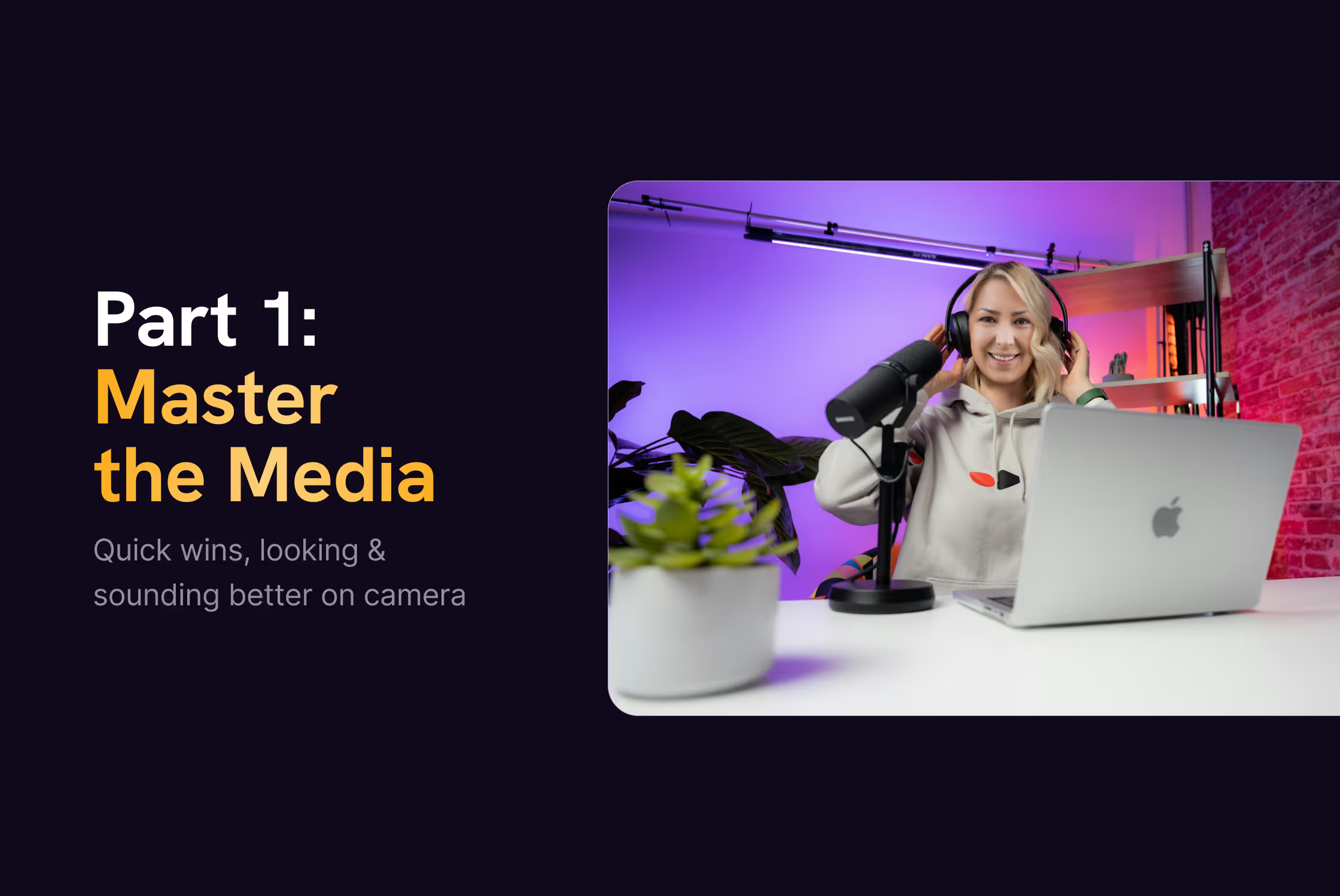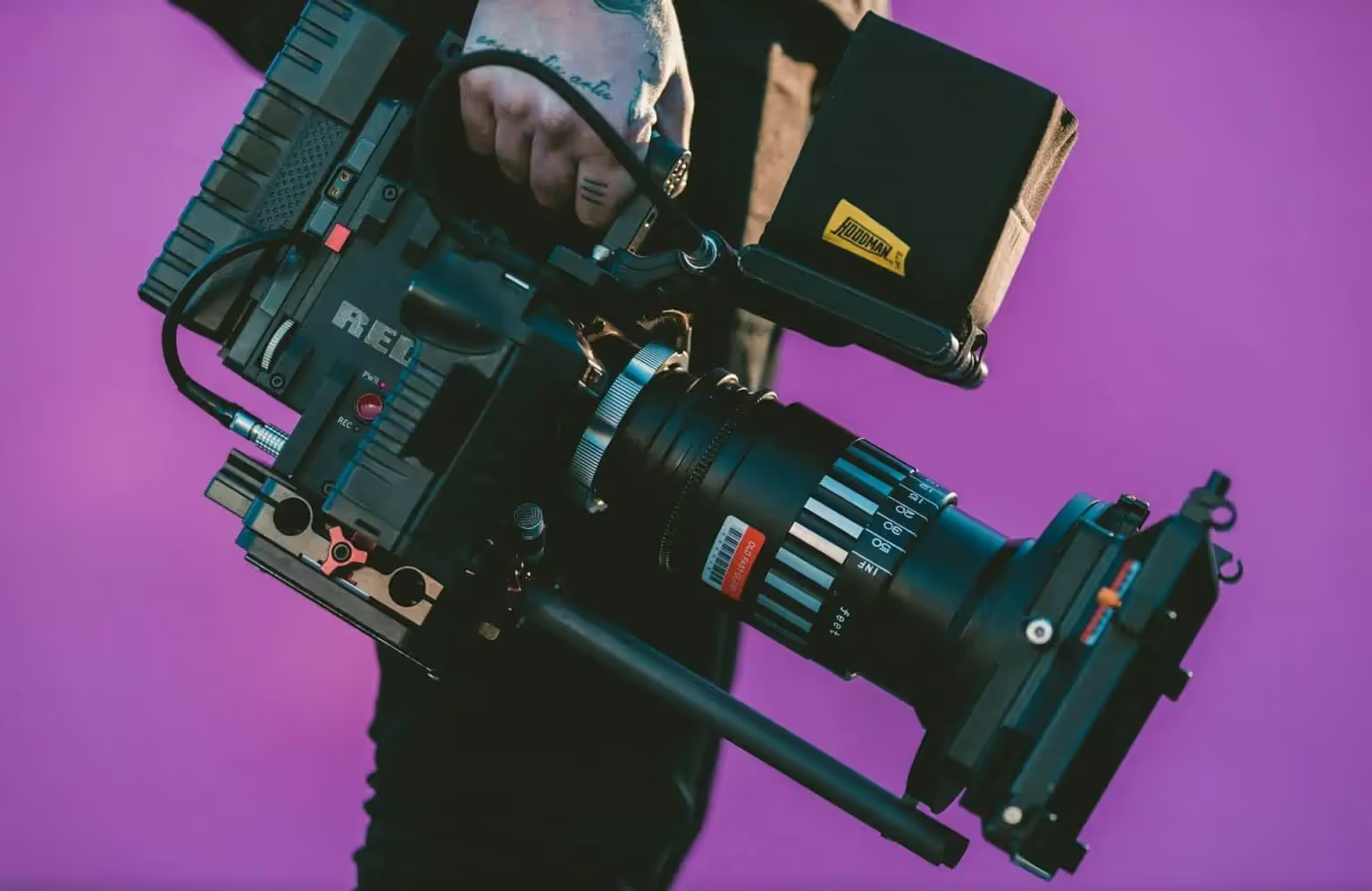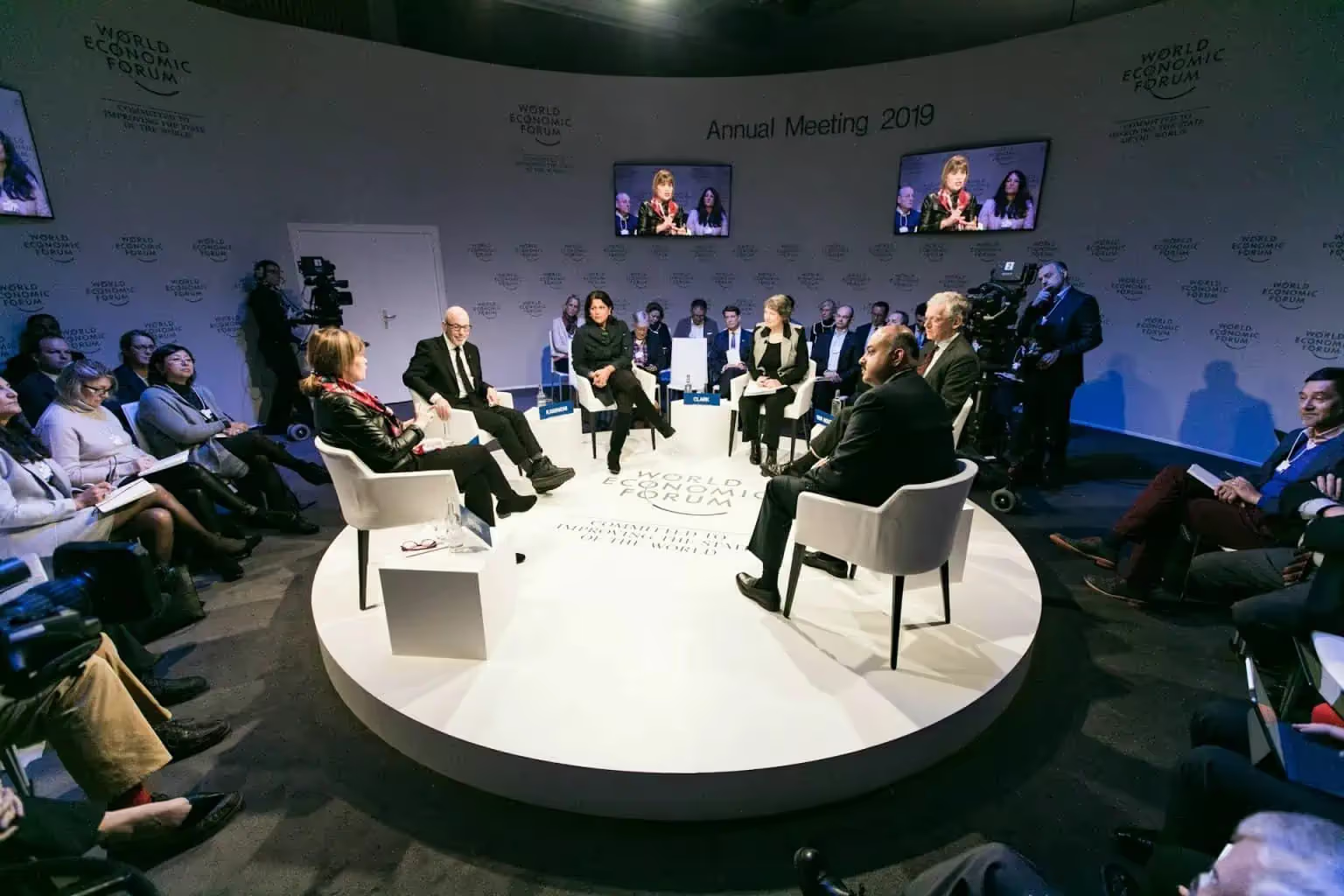Part 1: Master the Media - Quick Wins, Looking & Sounding Better on Camera


Recently, I've been getting questions about navigating media interviews and how a novice entrepreneur facing the camera for the first time can project their best image while ensuring that the conveyed messages align with their brand. This series aims to delve into the intricacies of media interviews. We will look at prevalent mistakes and explore industry best practices.
Read Part 2: Master the Media – Look Comfortable and Authentic here.
How to be Confident in Front of Any Media.
The most effective preparation for a media interview involves practicing on video. After recording, review the footage, identify areas for improvement, and repeat the process until you’re confident it reflects your best performance at your current skill level. This iterative approach ensures steady progress and presents your optimal self.
When individuals enroll in media training, it doesn’t involve simply reading a textbook; instead, they engage in on-screen practice until satisfied with their presentation. The goal is to achieve incremental enhancements with each session, cultivating a positive self-perception on video.
There’s no excuse not to undertake this practice, considering the affordability of cameras today and the ubiquity of smartphones. While it may initially feel unfamiliar, if you anticipate being on video—for a show, TV news, or a podcast—you’ll be on camera anyway. So, why not take the opportunity to deliver your best possible performance?

Quick Wins: Look Better on Camera and Easy Soundbites.
In this segment, I’ll give you three quick tips to enhance your confidence whenever you find yourself in front of a video camera.
Firstly, there’s a common concern about appearing heavier on camera, often attributed to the notion that the camera adds 20 pounds. However, it’s not the camera itself but your posture that plays a role. Sitting back and slumping can create an illusion of a double chin, while sitting too straight may make you appear nervous and unnatural. The key is to subtly lean forward towards the camera, striking a balance without exaggeration.
Secondly, if your aim is to secure a quote in a journalist’s final piece, be aware that all quotes in the news media share common sound bites, with emotion and absolutes being particularly effective. Expressing your feelings about a subject increases the likelihood of being quoted, and using words like “never,” “always,” “must,” or “have to” enhances the chances of your quote making it into the final story.
Thirdly, to exude confidence and actually be confident, minimize room for error by practicing every interview aloud. Rehearse your messages and sound bites, and speak in front of a phone camera. Record the session, review the playback, identify areas for improvement, make adjustments, and re-record as needed. Repeating this process a few times will significantly enhance your preparedness.

Look Great, Shape Your Message, Answer Questions and Speak in Sound Bites.
Let’s delve into the specific objectives you should aim for when making an appearance on camera.
Firstly, it’s crucial to understand how to present your best self during interviews. In the upcoming segments of this series, we’ll explore techniques to project your optimal image and appear relaxed to your audience.
The second goal revolves around mastering the art of shaping a message. In non-live interviews, where editing is a certainty, it’s essential to refine the focus of your message. This ensures that even when extracted from its original context, your message remains coherent. We will delve into crafting concise and impactful messages that can be delivered in 30 seconds or less.
Moving on to the third goal, it’s imperative to know how to respond to questions. Contrary to a common myth about media training, disregarding questions and speaking freely can lead to trouble. Reporters disapprove of such tactics, emphasizing the need to answer questions, albeit with a different approach than in other business interactions.
The fourth goal holds significant importance. It involves proactively constructing your message with quotable soundbites before the interview commences. Identifying quotes that are captivating enough to feature in a story and crafting soundbites that increase the likelihood of being quoted in the news is a nuanced aspect often overlooked. Striking the right balance is crucial, as an excess of quotable content can dilute the impact of your primary message.
While these four goals are central to navigating media interactions, it’s important to note that this series aims to provide practical insights not typically found in textbooks.
Overdoing the use of soundbites is cautioned against, as a surplus of quotable content may obscure your main point. This information is designed to be valuable not only for those facing the media but also for individuals creating their own videos or podcasts.
In essence, it aims to enhance your communication skills across various media platforms—be it new, traditional, or social.









